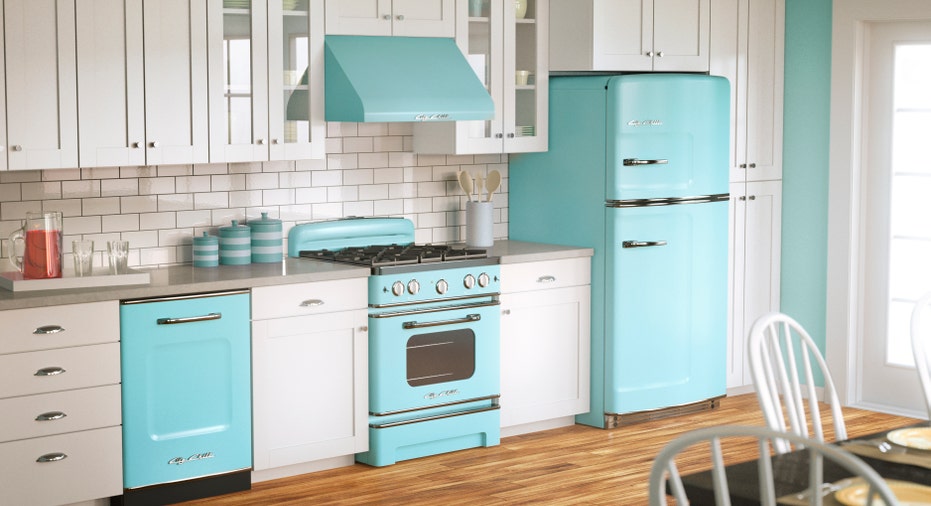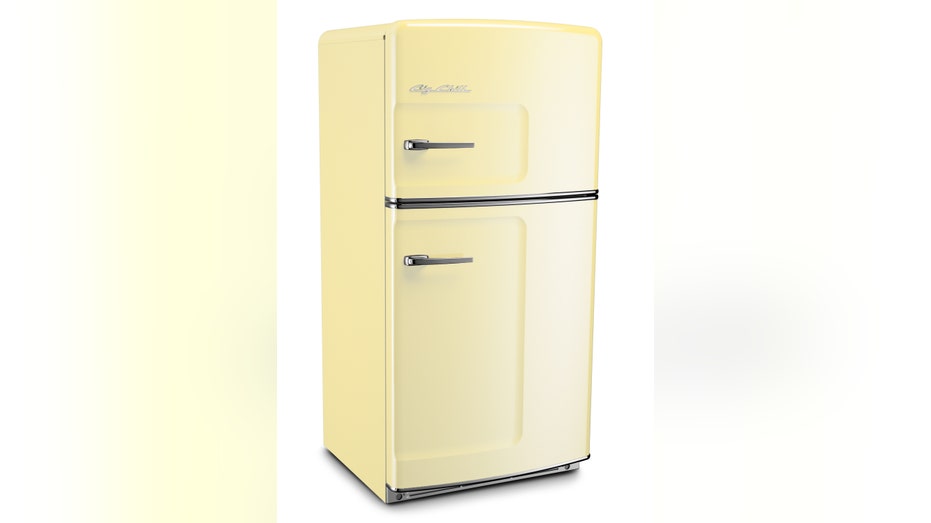Big Chill Appliances Ooze Celebrity Cool

There's every reason to envy Hollywood movie star Scarlett Johansson. She's glamorous, she's successful and she has a great kitchen. Step inside and you'll notice her appliances immediately. Her buttercup yellow refrigerator looks like something that she pinched from the set of a movie.
It's mid-century design with chrome trim and iconic 1950's shape appears as if it once belonged to June Cleaver or Harriet Nelson. But this appliance isn't an antique, it's brand new and on the inside it's state of the art.
The refrigerator is just one of many kitchen appliances now sold by a company based in Colorado called Big Chill.
"When celebrities started buying our appliances, I felt really good," said Orion Creamer, the refrigerator's designer. He viewed it as a sign that his appliances, largely sold over the Internet to people selecting from photos, had earned a seal of approval.

"The most impactful one was Rachel Ray," Creamer added, referring to the 30 Minute Meals chef and television talk show host. "She put one of our fridges on the set of her TV show - and I think that set her apart - and it set us apart."
Big Chill Starts Small
Creamer started Big Chill in 2001 after a series of unusual circumstances suggested there might be sizable market for retro appliances. "My aunt and uncle were building a house in Santa Barbara," Creamer explained. "They wanted the look of an old fridge but they didn't want a vintage fridge because they didn't want to have to defrost it."
Creamer had an epiphany. Already fascinated with refrigerator doors, which he collected as works of art, he realized there’s was no reason a new refrigerator couldn’t look old. In that moment Big Chill was born.

Initially a collaboration between Orion and his aunt and uncle, who bankrolled the business, the company experienced what can best be described as a soft launch. "It took me about 4 years to get the product off the ground," Orion admitted, with the first two years committed strictly to the product's design and color. Orion instinctively knew his refrigerator had to have a special something – a “je ne sais quois” - if he was going to break into an industry dominated by behemoths such as GE (NYSE:GE), Samsung, Whirlpool (NYSE:WHR) and others.
Working another job during the day, in his spare time Orion would tinker on the prototype, in the garage of his aunt and uncle's home. With the eye of an architect, Orion experimented with straight lines, curved lines, sharp angles, softer arcs and more, determined to get the look just right.
Fridge Business Heats Up
During that time, what may seem like an unremarkable event convinced Orion that his very small business had big potential. A guy walking down the street, stopped, and asked me what I was doing," he said. The inquiring pedestrian took an immediate shine to Orion's creation. "I was telling him about it and he asks me more, and then more. And then he writes a check," Orion recalled still somewhat stunned by the suddenness of the offer. "That was the day my uncle said, ‘Quit your job.’"
Orion heeded the advice and became the full-time president of Big Chill, a role he holds to this very day. Next, he hired a handful of people and never looked back. "That was a surreal experience," Orion said, "Bringing on people to work for me, and I was already in huge debt."

The next milestone occurred a few years later as Orion moved his small company into their current headquarters in Boulder, Colorado. "I remember that day well," he said. "It was a huge space and I thought how will we ever fill it?" At the time, the company was taking up a relatively small percentage of building's square footage. "We had one refrigerator model and a handful of people. Now, it's 10 years later and we're busting at the seams."
Opening the Refrigerator Door
Of course as the company grew, it needed funding. Enter Chris Kawaja, a serial investor who's currently the company's majority shareholder. He's also an entrepreneur who specializes in new business. "I got involved with the company in 2008," Kawaja said.
Scouring the landscape for opportunity, he liked the product and saw the potential. However there was another factor that ultimately sealed the deal. "I could tell Orion was a brilliant designer," which in turn, suggested the company could grow by introducing more products that would strike a similar chord with the public.
Considering Big Chill had already carved a niche for itself in the refrigerator market, it made sense to both Kawaja and Creamer to focus on other kitchen items as they began to expand.
Together, the company increased its product line to include stoves, dishwashers, as well as refrigerators of different sizes and it introduced another, more contemporary style. The range of colors increased too, with some of the most popular ripped from the pages of the Eisenhower era - beach blue, cherry red. pink lemonade and buttercup yellow, the shade that Scarlet Johanssen fancied.
"When we jumped into the full kitchen, that was massive," said Creamer, referring to an important milestone in his company's history. That was the seminal event that suggested the company had evolved beyond a point that, at the beginning, Creamer wasn't sure would even be attainable. "We kept the name Big Chill, but you can see when I started I thought I'd only be doing refrigerators."
Lessons from The Past
As a private company, Big Chill doesn't release balance sheet info, however, "We've grown at a rate of over 20% per year," Chris Kawaja replied when asked about sales.
Of course no business achieves double digit growth without first experiencing some growing pains. However from their missteps came valuable lessons that both executives believe could benefit other entrepreneurs.
"Have your ears up," Kawaja noted. "Look for signals to learn what's working and have the courage to discard what isn't working." There's no shame in admitting you've made a mistake and pivoting in a new direction.
"And don't be afraid to think differently and to think big," Creamer added. It's those philosophies combined with the company's core commitment to design and color that both Kawaja and Creamer believe will drive further expansion.
So what is next?
"Maybe a car," Orion said, in a tone of voice that suggested he wasn't entirely serious but wasn't joking either. Although Kawaja and Creamer wouldn't say specifically what may be in the works, they've clearly been thinking about it. "Color and design," Orion continued. "I think it can transcend the fridge. In fact, I know it can."
Lee Brodie is a freelance writer who has been covering finance, consumer and business news for more than 20 years. A graduate of Monmouth University he's also a playwright and script writer of documentaries.



















